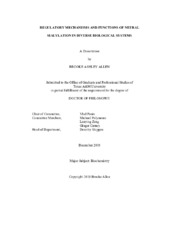| dc.description.abstract | Defects in sialylation cause numerous human pathologies including heart disease, cancer, immune system dysfunction, and neurological abnormalities. However, the pathological mechanisms of these disorders and regulation of sialylation remain poorly understood. I used the Drosophila model combined with genetic, neurobiological, and microscopy approaches, to investigate the function and regulation of sialylation in the heart and nervous system. I found that defects in sialylation result in cardiac abnormalities, including a reduced heart rate. My results indicated that sialylation affects heart functions via regulation of the nervous system, suggesting that sialylation controls neurons that innervate the heart. I established Drosophila as a model for further research to elucidate genetic and molecular mechanisms of sialylation-mediated regulation of heart development and physiology, which will potentially shed light on analogous mechanisms that regulate human heart and contribute to etiology of cardiovascular diseases. Previous experiments in our lab outlined a sialylation-mediated mechanism of glianeuronal coupling. I tested this hypothesis and confirmed that CSAS, the sugar donorsynthetizing enzyme (CSAS) functions in glia.
I further investigated another enzyme, sialic acid synthase (SAS), working upstream of CSAS in the sialylation pathway. SAS remains largely uncharacterized in animals, while understanding its functions could suggest approaches for therapies in pathological conditions. I revealed that SAS mutations result in neurological defects. My experiments indicated that SAS is required in glial cells, and that its product, sialic acid can be transported between the cells. I found that sialic acid can be provided during a critical time in development as a dietary supplement to rescue SAS mutants. Intriguingly, my data also suggested that SAS has additional function outside of the canonical sialylation pathway. Taken together, my experiments provided the first detailed in vivo characterization of SAS and supported a bipartite regulation of neural sialylation. I established a useful model for further elucidation of SAS functions, which is expected to reveal novel biomedically relevant mechanisms | en |


